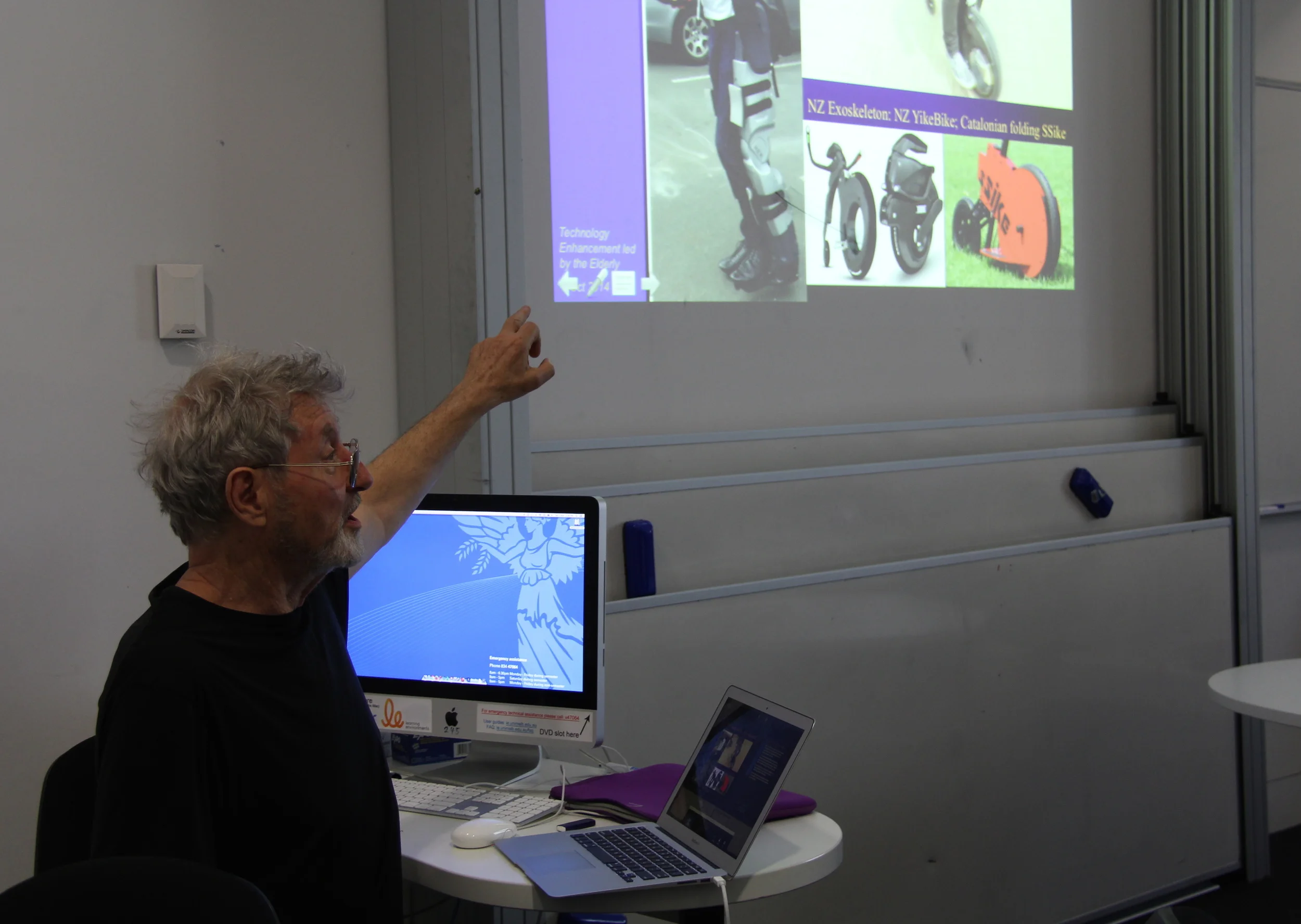Session coverage by guest blogger Liam Stanley
Session Details
- Presented by Marcus Wigan (Email, Website)
- Location: Room Three
- Time: Session #5 (2.20pm - 2.55pm)
- Number of Attendees: 12
- Format: Presentation and Discussion
Marcus Wigan is an advocate for community transport and professor at the Melbourne School of Land and Environment.
"25% of the population experience issues with mobility over a distance of 400m"
The two key barriers to evolving community transport are:
- Legal issues
Governance is not set up to represent 25% of the communities transport needs.
Uber example of open source response to transport, however changes to existing governance of transport services needs to implemented for the successful growth of openly sourced transport.
- Perception
Community transport has the public perception as targeted and highly limited services that encourage dependency. It is a service for the nursing home residents outing or people who can’t drive.
Community transport is the realisation of the stereotypical idea of elderly people as dependant leading to the accommodation of them as such. The result of this is that community transport is highly under-utilised and highly subsidised. This should not be the case.
Possible solution for increasing the mobility of older individuals:
YikeBike, among others is a possible solution to help the less mobile reach the public transport networks and services. However such a class of transport is not recognised within current legal frameworks.
Not so much changing the community transport users, rather changing the governance
Comments:
- Welfare aspect of transportation
- Ageing and less mobile individuals, automatically get placed into final/direct door to door services i.e. car.
- Politics between service providers constrain the coordination of services.
- Questions about the appropriateness of small trikes and electric bikes/scooters transport for elderly people
- YikeBike, Segway etc, would the elderly be able to appropriately control them?

